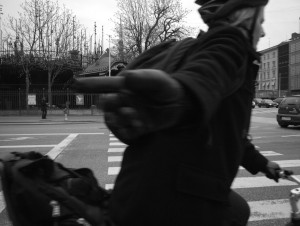Truth be told, cycling can be dangerous. We often share the road with cars and other vehicles that can cause serious injury to us in a collision. When it comes down to it, bicycles just don’t have the protection that a car provides. That being said, there are some things that we can do to increase safety and reduce risk.
First, understand Utah’s biking laws. Knowing when to yield and how to signal could save your life. Whether you are just a casual rider or a more serious cyclist, knowing Utah’s bicycle laws are a must before heading out on the road.
Differences Between Car and Bike Laws
Just like driving, there are things you can and cannot do on a bicycle. While some laws seem like common sense, there are others that are important to know to help protect you on the road. Because a bicycle is considered a vehicle, you must obey all traffic signals when biking. Everything from stop signs to yield signs and traffic signals are just as applicable when on a bike. You must also ride in the same direction as traffic. This may be the opposite of what you have heard, but it’s required by law. So far, it seems like biking and driving laws are nearly identical, but there are some differences.
Because your bicycle isn’t equipped with blinkers or brake lights, it is your responsibility to alert other drivers on the road where you are planning on going, or if you are slowing down. Always signal your intent to turn right or left at least three seconds before you turn:
- For a left-hand turn, extend your left hand horizontally
- To turn right, extend you left hand in an upward position, or extend you right arm horizontally
- Extending your left-hand arm downward lets others on the road know that you are planning on stopping or slowing down
Be sure to practice these hand signals in a safe area before testing them out on the road.
Other Things To Know
Did you know it’s against the law to have a siren or whistle on your bike? But you are required (by law) to have a white headlight, red taillight/reflector, and side reflectors on your bike if you intend to ride before or after sunset. This helps increase your visibility on the road which can prevent an accident. It’s also important to maintain your bicycle to make sure it’s safe to ride. When riding at 10 MPH, the brakes on your bike should be able to stop you within 25 feet on dry, level pavement. As it turns out, bike maintenance is just as important as car maintenance. Make sure your bicycle is in working order before riding.
While it’s not against the law to ride without a helmet, doing so is incredibly dangerous. The most serious and frequent injuries to bicyclists are head related. Head injuries can be significantly reduced by one simple action: wearing a helmet. Wearing a helmet can reduce the odds of a head injury by 50%! Cyclists young and old should always wear a helmet while riding.
Riding With Others On the Road
We are often biking on the road with other vehicles, so it’s good to keep in mind that laws include motorists too. By law, a car must be further than 3 feet away from a moving cyclist. Also, you cannot ride more than two abreast (and only if this doesn’t impede traffic). Cyclists, like motorists, must yield to pedestrians.
This may seem like a lot to take in, but these laws are here for a reason. Cycling more safely can be accomplished by following these laws. However, accidents still happen. If you have been hurt in a cycling accident, we are here to help. Come in for a free consultation, or feel free to call Utah’s Bicycle Lawyers at (801) 506-0800.
Now Test Your Knowledge
You’ve learned a little about Utah’s bike laws, now it’s time to test your knowledge and see how well you paid attention.
[gravityform id=”6″ title=”true” description=”true”]

